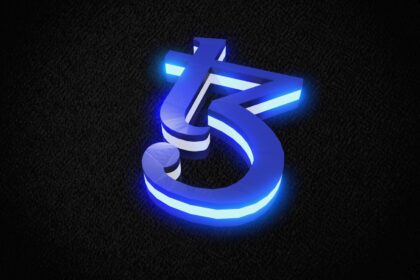Zero-knowledge protocols enable one party to confirm the truth of a statement to another, ensuring that no additional information is disclosed during this verification process. This method is fundamental in cryptography for maintaining confidentiality while still providing reliable validation.
By leveraging these techniques, users can remain anonymous and prove ownership or authenticity without exposing any underlying data. For instance, proving you are over a certain age to access a service can be done without sharing your exact birthdate or identity details.
The strength of such cryptographic methods lies in their ability to guarantee correctness through mathematical rigor, rather than relying on trust or revealing private inputs. This approach significantly enhances data protection and enables secure interactions across various applications where privacy matters most.
Zero-knowledge proofs: privacy without revealing secrets
To achieve secure validation of data in blockchain systems while maintaining user anonymity, zero-knowledge methodologies provide a robust solution. These cryptographic techniques enable one party to confirm the truthfulness of information to another without exposing the underlying data itself. This approach is particularly valuable for applications where confidentiality and verification must coexist.
In practice, this means that sensitive information can be authenticated reliably by network participants without making any personal or transactional details public. For example, a user can prove ownership of funds or credentials on a decentralized platform without disclosing their identity or transaction history, preserving discretion at every stage.
The technical foundation and implementation
At its core, the concept relies on advanced algorithms from modern cryptography that generate mathematical evidence demonstrating correctness. Interactive protocols between prover and verifier allow confirmation of statements through complex computations that reveal no additional knowledge beyond validity. Notable implementations include zk-SNARKs (Succinct Non-interactive Arguments of Knowledge) and zk-STARKs (Scalable Transparent Arguments of Knowledge), which differ mainly in setup trust assumptions and scalability features.
This technology has been integrated into various blockchain projects aimed at enhancing confidentiality layers. For instance, Zcash utilizes zk-SNARKs to enable shielded transactions where balances and sender-recipient data remain hidden but verifiable by miners during consensus. Similarly, StarkWare employs zk-STARKs to facilitate scalable off-chain computations that maintain integrity without compromising participant anonymity.
- zk-SNARKs: Require trusted setup; concise proof size; fast verification;
- zk-STARKs: Transparent setup eliminating trust assumptions; larger proof size; quantum-resistant;
The choice between these depends on factors such as application needs for transparency, performance constraints, and resistance against emerging threats including quantum computing.
Real-world scenarios illustrating practical benefits
A common analogy is proving age eligibility online–users can validate they are over a certain age without sharing exact birthdates or other identifying information. Translating this to blockchain finance, zero-knowledge methodologies allow users to confirm solvency or creditworthiness with lenders while safeguarding transaction histories from competitors.
Moreover, decentralized identity frameworks harness these protocols to empower self-sovereign identities where credentials issued by trusted authorities can be verified by service providers anonymously. This reduces risks related to data breaches and enhances user control over personal information dissemination.
Challenges and future perspectives
The computational intensity involved in generating proofs remains a hurdle for widespread adoption in resource-constrained environments like mobile devices. Efforts continue to optimize algorithms for efficiency improvements and reduce latency during verification steps. Additionally, standardization across platforms is crucial for interoperability between diverse blockchain ecosystems leveraging these cryptographic tools.
The ongoing research into post-quantum secure constructions aims to future-proof these methods against emerging computational capabilities that could undermine classical cryptographic schemes currently used in zero-knowledge designs. Integration with layer-two scaling solutions also promises enhancements in throughput and cost-effectiveness while maintaining high assurance levels in anonymity-preserving verification processes.
How zero-knowledge proofs verify data
Verification of information through cryptographic methods can be achieved without exposing the underlying details. This is made possible by specialized algorithms that allow one party to demonstrate the truthfulness of a statement to another, while ensuring the actual content remains confidential. Such techniques enable validation processes that maintain user anonymity and data confidentiality simultaneously.
These cryptographic protocols rely on complex mathematical constructs enabling a prover to convince a verifier that they possess certain knowledge or that a particular condition holds true, all the while withholding any additional data. This approach effectively shields sensitive material from exposure during verification, making it highly suitable for applications requiring stringent confidentiality guarantees.
Technical principles behind anonymous verification
The core mechanism involves interactive or non-interactive exchanges in which the prover generates evidence demonstrating compliance with a predefined criterion. Instead of sharing raw data, the prover provides mathematical attestations derived from concealed inputs. The verifier then checks these attestations against established parameters to confirm validity without accessing any private elements.
For example, in blockchain systems, these protocols allow transaction validation where users prove ownership of funds or rights to transfer assets without disclosing their exact balances or identities. This capability enhances transactional privacy significantly while preserving trust and preventing fraud through rigorous cryptographic assurance.
- Interactive protocols: Involve multiple rounds between prover and verifier, increasing communication complexity but offering strong security guarantees.
- Non-interactive variants: Utilize common reference strings or random oracles to reduce interaction, improving scalability for decentralized networks.
A prominent implementation is zk-SNARKs (Succinct Non-interactive Arguments of Knowledge), which compresses proofs into compact forms verifiable swiftly by network participants. These tools have been integrated into privacy-focused cryptocurrencies such as Zcash, allowing shielded transactions where amounts and participants remain undisclosed yet fully validated.
This technology also finds use cases beyond finance: identity authentication systems employ these methods so users can confirm attributes like age or citizenship status anonymously. Similarly, voting platforms benefit by validating eligibility without revealing voter choices. These scenarios illustrate how proof generation can uphold individual confidentiality during mandatory verification steps.
The main advantage lies in achieving confirmation of factual claims while maintaining strict discretion over underlying information. By separating knowledge validation from disclosure obligations, these cryptographic solutions empower secure interactions that respect participant anonymity and safeguard sensitive datasets across various domains.
Implementing zk-proofs in blockchain
Integrating zero-knowledge methods into blockchain systems enables validation of transactions and data without exposing any underlying information. This cryptographic approach ensures that one party can confirm the authenticity of a statement while keeping all related details confidential, significantly enhancing transactional discretion. Practical applications include confidential payments on networks like Zcash, where transaction amounts and participant identities remain undisclosed during verification, yet validity is provably guaranteed.
The architecture behind these mechanisms relies heavily on advanced cryptography, such as zk-SNARKs (Succinct Non-interactive Arguments of Knowledge), which provide compact and efficient proofs. These can be integrated into smart contracts or consensus protocols to improve scalability and security simultaneously. For instance, Ethereum’s implementation via zk-rollups consolidates numerous transfers off-chain, generating concise proofs that attest to their correctness on-chain – maintaining throughput without compromising data concealment.
Technical considerations and deployment strategies
When deploying these cryptographic systems within decentralized ledgers, developers must consider computational overhead and proof generation time. While proving can be resource-intensive, verification remains relatively lightweight, making the technology suitable for nodes with limited processing capabilities. A recommended workflow involves generating proofs off-chain followed by submitting them for on-chain confirmation, balancing efficiency with rigorous validation.
Case studies highlight diverse use cases: private voting platforms leverage these algorithms to confirm voter eligibility and vote tallying without disclosing individual choices; supply chain tracking solutions utilize them to authenticate product provenance while safeguarding proprietary information. By adopting this methodology, blockchains can enhance trustworthiness through transparent yet confidential verification, preserving sensitive inputs while confirming compliance with protocol rules.
Limitations of zero-knowledge proofs
Cryptographic methods that allow verification without disclosing underlying data provide significant advantages in securing information. However, the implementation of such protocols comes with inherent constraints that affect their scalability and practical deployment. For instance, the computational overhead associated with generating and validating these cryptographic attestations can be substantial, often requiring specialized hardware or optimized algorithms to maintain efficiency.
In addition, while these mechanisms ensure that sensitive information remains hidden during validation processes, they are not immune to subtle vulnerabilities. Flaws in protocol design or improper parameter selection may lead to partial exposure of confidential inputs or enable adversaries to infer private details through side-channel analysis. Therefore, rigorous security audits and continuous improvements are essential for maintaining trustworthiness.
Technical Challenges Affecting Adoption
The complexity of constructing non-disclosing verification systems poses significant barriers for widespread adoption. Generating proofs typically involves intricate mathematical operations rooted in advanced number theory and elliptic curve cryptography, which can be difficult to implement correctly. This complexity increases development time and cost, making integration into existing blockchain frameworks a meticulous task.
Moreover, the size of generated attestations can impact network performance. Large proof data increases bandwidth consumption and storage requirements on distributed ledgers. For example, early implementations in privacy-focused cryptocurrencies encountered issues where transaction sizes ballooned due to bulky proof structures, leading to slower synchronization times among nodes and elevated operational expenses.
Limitations in Expressiveness and Functionality
Non-disclosing validation techniques are not universally applicable across all types of computations. Certain classes of functions or statements remain challenging to encode efficiently within these frameworks. Complex logic involving loops or dynamic memory access often requires elaborate circuit representations that inflate proof generation time exponentially. As a result, some applications must simplify their verification goals or accept reduced expressiveness.
Furthermore, interoperability between different cryptographic schemes is limited since each system relies on specific assumptions and parameters. Transitioning from one approach to another might necessitate complete reengineering of smart contracts or off-chain components responsible for proof handling, hindering flexibility for developers aiming to optimize privacy guarantees alongside system usability.
Trade-offs Between Privacy Guarantees and Verification Costs
The balance between protecting user confidentiality and maintaining practical verification speeds remains delicate. Enhanced obfuscation levels typically demand more computational power both from provers creating attestations and verifiers checking them. In resource-constrained environments like mobile devices or IoT networks, this trade-off becomes pronounced as excessive processing drains battery life or introduces latency detrimental to user experience.
An illustrative case arises in decentralized identity solutions where proving attributes without disclosure is desirable but must occur swiftly during authentication events. Here, lightweight alternatives may sacrifice some concealment strength to achieve prompt responses, highlighting the necessity for context-aware optimization strategies tailored to specific use cases.
Conclusion: Practical Applications and Future of zk-Proofs
Verification processes that confirm authenticity without exposing underlying data are transforming cryptographic protocols. By enabling anonymous validation, these methods preserve confidentiality while ensuring trustworthiness, which is crucial for industries requiring stringent data protection. For example, blockchain transactions can be validated using such techniques to prove legitimacy without disclosing transaction details, enhancing both security and user anonymity.
Current implementations demonstrate how privacy-preserving mechanisms support secure voting systems, confidential financial audits, and identity verification where the verification itself reveals nothing beyond the claim’s validity. This approach reduces risks associated with data leaks and unauthorized access, while maintaining rigorous standards in compliance and fraud prevention.
Key Insights and Emerging Trends
- Selective disclosure: Individuals can prove attributes (e.g., age or citizenship) without sharing full documents, minimizing exposure of personal information.
- Scalability improvements: Advances in succinct non-interactive arguments enable faster verifications suitable for large-scale decentralized applications.
- Interoperability: Integration with existing cryptographic frameworks allows seamless adoption across diverse platforms including DeFi protocols and permissioned ledgers.
- Anonymity enhancement: Combining these proofs with ring signatures or mixing services further obscures participant identities during verification processes.
The trajectory points toward more widespread deployment where preserving confidentiality remains paramount but auditability cannot be compromised. As research advances, expect enhanced user experience through simplified interfaces that abstract complex cryptography while delivering robust guarantees against information leakage. Developers should prioritize embedding these proof systems into wallets, identity platforms, and regulatory tools to strike a balance between transparency and discretion.
This fusion of mathematical rigor with practical usability marks a significant step toward decentralized ecosystems that respect individual autonomy. By continuously refining mechanisms for anonymous attestation and efficient verification, the technology promises to redefine trust models across sectors–from finance to healthcare–without sacrificing operational integrity or revealing critical internal parameters.





